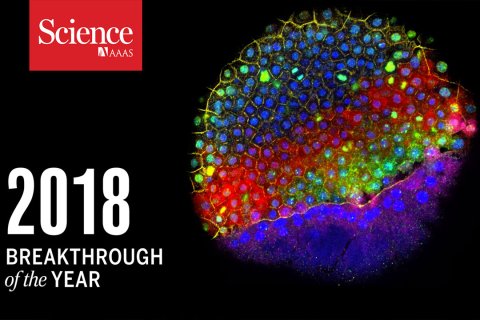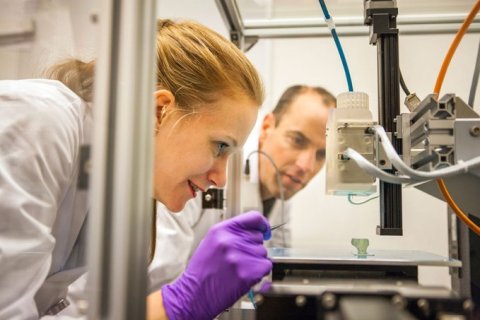The Roots of Regenerative Medicine
“The immortal Prometheus was bound to a rock, where each day an eagle was sent to feed on his liver, which would then grow back overnight to be eaten again the next day.”

An Old Mystery
Prometheus’ fate is probably the most popular Greek myth among researchers, at least in regenerative medicine. The liver has astonishing regenerative capacities; we can remove up to 2/3 of this organ, and within 5-7 days, the undamaged lobes will enlarge to make up for the lost parts. From an evolutionary point of view, the capacity of liver regeneration might have developed as protection mechanism against liver loss due to the consumption of toxic food. It is a mind-blowing idea that ancient Greek could have observed this phenomenon already thousands of years ago, while the mechanism behind it is still not fully understood.
A New Epidemic
There are countless fascinating mysteries that we as scientists try to unravel to advance human health. I dare to claim that we have only discovered and understood a fraction of what nature has created over the last 200.000 years. However, this does not mean that we have not made any progress so far. To the contrary, we have reached some amazing milestones. Before the 20th Century, infectious diseases were the main reason of death, which resulted in an average life expectancy of 47 years only. 1676, the Dutch scientist Antoni van Leeuwenhoek built the first microscope and discovered microorganisms, which he called ‘animalcules’ (meaning ‘tiny animals’). We would soon find out that these tiny animals can make us sick. And 300 years later, the discovery of antibiotics would become a true revolution; the leading cause of death changed from communicable diseases to non-communicable diseases and life expectancy rose to 78 years!

But with this immense success, we now encounter a new epidemic: ageing. Old bodies are prone to malfunctioning. When organ function cannot be preserved, surgery offers three solutions (3 R’s): resection, repair and replacement.
An Outdated Solution
When a lesion is too large, resection and repair are often not sufficient anymore. In 1954, the kidney was the first organ to be successfully replaced in a patient with a healthy donor organ. However, recipients are dealing with the problem of life-long immunosuppression and there is a consistent donor shortage. In our ageing and ever-growing society, the latter problem will only become bigger with time. Artificial solutions, like dialysis to replace kidney function, are only medium-term solutions as they are expensive and burdensome, and many biological functions cannot be taken over. Dialysis, for example, can only replace 20% of kidney function. Until now, nature has by far more power than any artificial machine. Unfortunately, replacing failing organs with scarce donor organs or suboptimal machines is the only solution that we have. And, even though these solutions are not yet a century old… they become outdated already.

A New Solution: Regenerative Medicine
Prometheus’ liver regeneration is special as it is not dependent on progenitor or stem cells. Every other human tissue depends on precursor cells that will develop into the tissue-specific cell type when needed. And this is the foundation stone of a new era in medicine, the potential 4th R for surgery: regenerative medicine. So far, we mainly used chemistry to treat symptoms or to kill foreign bodies, but now we are shifting towards using nature’s power itself to cure our bodies. By using the building blocks of developmental biology and by cracking its code, we become able to grow human tissue in the lab.
With a rich mix of nutrients and specific growth factors, we can culture human cells in petri dishes and plastic wells plates. We can maintain tissue-derived stem cells in culture, or we can use specific transcription factors to reverse time and bring any cell back into a stem cell state; and by adjusting the media or by further editing their genes, we can guide nature into the desired direction and let her do her wonders. The cells self-organise into structures that resemble mini-organs with increasing complexity and function: organoids.

Bottom-Up and Top-Down
Current organoids are still small and pre-mature, but we invest our money, hard work and hopes for them to become the solution that is urgently needed to replace failing organs. While nature is the organoid’s engineer, we are, in the meantime, also trying to be engineers ourselves. With emerging technologies like 3D printing, we can assemble cells within scaffold materials to create a defined tissue with our own hands. Biofabricated cartilage is a very promising example – it is a relatively simple tissue and yet one of the most urgently needed.

Regenerative Medicine Utrecht
Regenerative medicine is a very young field but its potential is thrilling. What is our role in this? Regenerative Medicine Utrecht brings together the largest number of researchers in the Netherlands to work in this diverse field. Two out of three main themes are stem-cell and organoid technology, and musculoskeletal regeneration. When Antoni van Leeuwenhoek discovered his ‘tiny animals’, he probably did not know that 300 years later, we would have some of the most deadly diseases under control, and die of aging organs rather than infections. Today, we are discovering how to grow human tissue in the lab and we have made considerable progress within one decade only… how far will we have come in 300 years? From this perspective, science fiction does not seem to be so fictional at all.

A Soon-To-Be Tree
You might want to call the ancient Greeks’ observations the roots of regenerative medicine, but the term itself appeared for the first time only 25 years ago! The roots of regenerative medicine are only striking now, and our research is like a little flower that is just starting to bloom. But, for the future, it is a soon-to-be tree. If we keep nurturing this little flower like we do, we might see it flourish within a lifetime.

